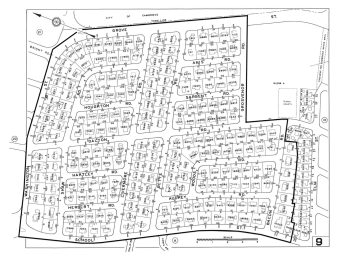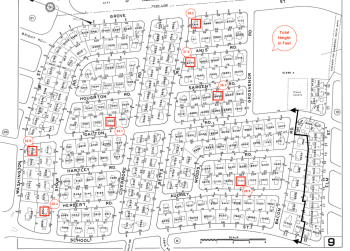Have you ever considered running for elected office for Belmont? How about being a Town Meeting member?
If you have, the Belmont Town Clerk’s Office advises that time is running short on this opportunity to represent the town or your precinct as the due date to submit nomination papers is fast approaching – Tuesday, Feb. 17 – to see your name on the April 7 Town Election ballot.
Town-wide Offices
There are many Town-wide elected offices that will appear on the Annual Town Election ballot. If you’re interested or want to share your skills in this way, now is the time to step forward. Here is the list of town-wide offices up for nomination, in the order they will appear on the ballot.
- Moderator elect one person for one year
- Board of Selectmen elect one member for three years
- Board of Assessors elect one member for three years
- Board of Cemetery Commissioners elect one member for three years
- Board of Health elect one member for three years
- Members of the Housing Authority elect one member for five years
- Trustees of the Public Library elect two members for three years
- Members of the School Committee elect two members for three years AND one member for two years
Representative Town Meeting – Representatives from Each of the Eight Voting Precincts
In addition to the Town-wide offices, 12 representative Town Meeting members are elected for three-year terms from each of our eight voting precincts. This year, there are also some partial term openings for Town Meeting, vacancies created by members moving or resigning:
- Precinct 1 : elect 12 members for three years
- Precinct 2 : elect 12 members for three years
- Precinct 3 : elect 12 members for three years
- Precinct 4 : elect 12 members for three years
- Precinct 5 : elect 12 members for three years AND 1 member for one year
- Precinct 6 : elect 12 members for three years AND 1 member of one year AND 1 member for two years
- Precinct 7 : elect 12 members for three years AND 4 members for two years
- Precinct 8 : elect 12 members for three years AND 1 member for one year
Incumbent Town Meeting members who want to run for re-election in 2015 must notify the Town Clerk by 5 p.m., Jan. 27, by submitting the Intention Letter that was mailed in December to those Members whose term expires in 2015. Missing that deadline means having to collect signatures on nomination papers.
Annual Town Meeting takes place in the spring, and typically lasts for six evenings, (customarily Monday and Wednesday) starting May 4 then reconvening on June 1. Town Meeting makes all of the decisions about the Town’s budgets and local Bylaws. Belmont’s government is a Representative Town Meeting, which means that only Town Meeting members can vote at Town Meeting, unlike the Open Town Meeting form of government. That’s why it’s very important that all the Town Meeting seats are filled to have full representation of each Belmont neighborhood.
Getting Your Name on the Ballot
Running for election is simple. Stop by the Town Clerk’s office to pick up nomination papers; have your neighbors and friends who are registered voters sign your papers and submit the signed forms to the Town Clerk by the deadline, Feb. 17, at 5 p.m.
To be nominated for Town-wide office, you must have signatures of at least 50 registered voters of the Town on the nomination papers. The Town Clerk must certify these signatures so we always suggest obtaining about 20 percent more just to be safe.
To be nominated for Town Meeting, the signatures of at least 25 registered voters of your precinct are required on the nomination papers. The Town Clerk must certify these signatures so we always suggest obtaining about 20 percent more just to be safe. Some current Town Meeting Members will be seeking re-election but all 12 seats are available in each precinct.
Find Out More
The Town Clerk’s web pages contain quite a bit of information to help make a decision to seek office by selecting “Town Clerk,” then select “Campaigning: Running for Elected Office in Belmont or Town Meeting Member Information” or by calling 617-993-2600.

